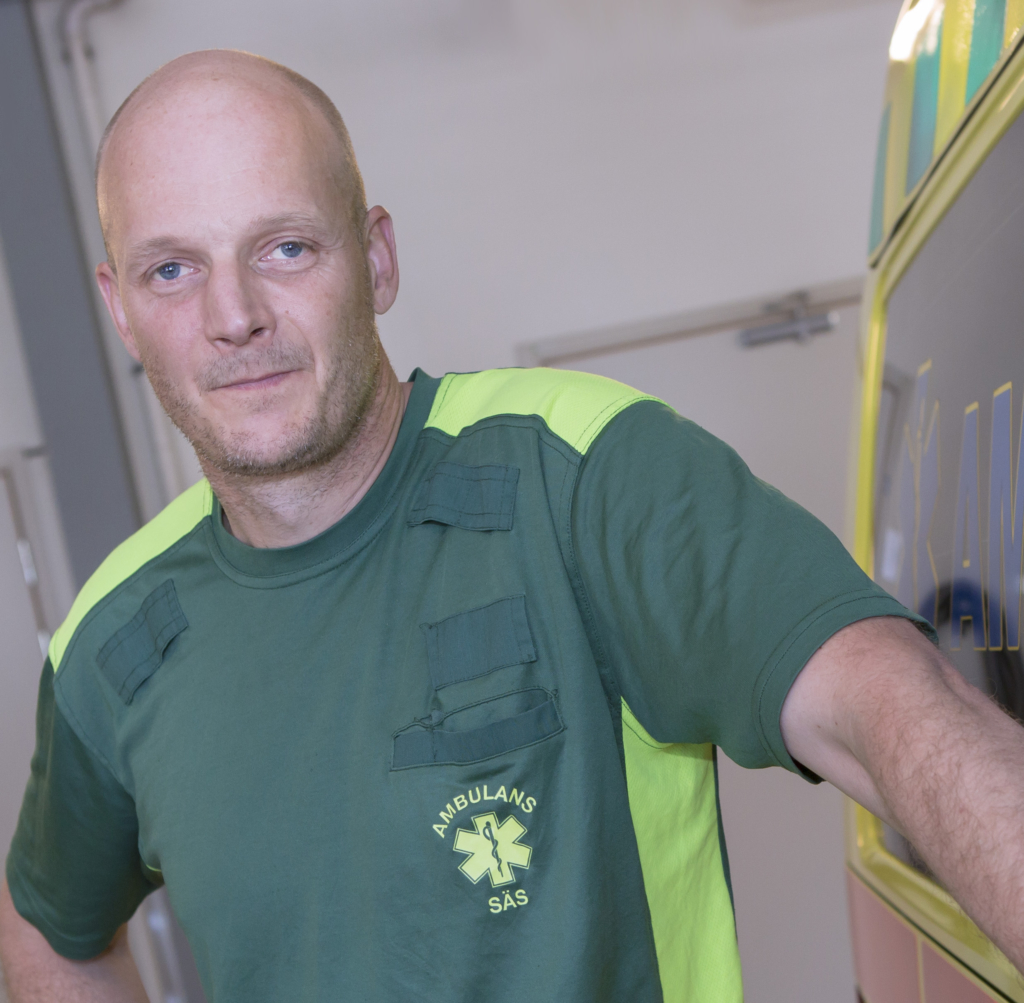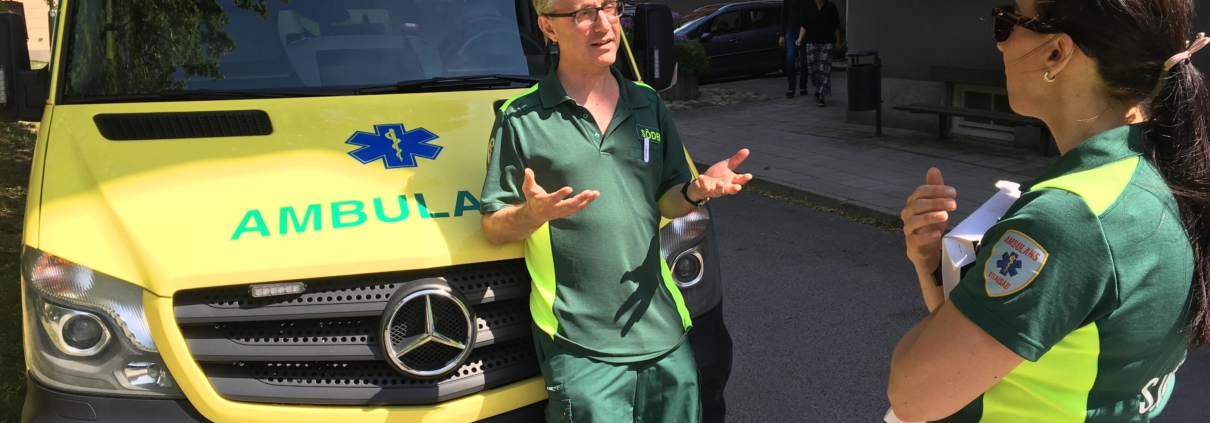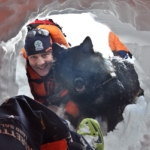Voluntarily Independent: An Interview with Magnus Hagiwara, Ph.D.
https://chat.whatsapp.com/AmbulanceToday

Magnus Andersson Hagiwara, Ph.D (pictured) of the Centre for Prehospital Research at the University of Borås, Published in Ambulance Today, Issue 4, Volume 13, Priceless EMS: The Volunteers At The Heart Of Prehospital Care, Winter 2019
Magnus Andersson Hagiwara, Ph.D., is Associate Professor at PreHospen, the Center for Prehospital Research, in the Department of Caring Science, Work Life and Social Welfare at the University of Borås, Sweden.
MARK WEINER: What role do volunteers hold within Swedish EMS? Are there any volunteers within either the re or ambulance services?
MAGNUS ANDERSSON HAGIWARA: In EMS there are no volunteers in Sweden. When it comes to the fire department the question is trickier. There are three levels of fire personnel: 1) fire fighters working full time. They live at the re station during work; 2) part-time fire fighters who have other ordinary work but are on call one week at time. They need to be at the fire station within five minutes after the call. They have the same responsibilities as the full-time fire fighters; and 3) standby fire fighters. These fire fighters have an emergency alert at home and it is voluntarily for them to respond to a call or not. They are paid only when they respond to a call. I suppose you can call the last category volunteers.
I think that EMS workers in Sweden are not seen as heroes. They are just workers doing what they are paid for. Personnel in the fire brigade have a higher status
M.W: Turning specifically to the ambulance service, how many years of training are required of personnel before they ride in an ambulance? Could you describe what it takes to become a Swedish EMT?
M.A.H: In the past, ambulance care was executed by EMTs with a short education in prehospital care (20–40weeks), but since 2005 all ambulances are staffed by at least one Registered Nurse (RN) with medical responsibility, in accordance with Swedish law. EMTs need have a three-year high school education and then a 40-week EMT education.
RNs have three years’ additional education leading to a bachelor’s degree. A specialist nurse in prehospital emergency care has one year of additional training.
An ambulance team in Sweden includes an EMT along with an RN, a prehospital emergency care nurse, or an RN with another specialist education such as anaesthesia or intensive care. The RN independently administers around 30 different drugs according to written guidelines and general delegation.
The proportion of RNs in Swedish prehospital care has been estimated at 68–78%. The proportion of RNs with specialist education varies widely between regions from 20 to 85%.
M.W: Do ambulance services have a civic presence in their communities beyond their immediate role of responding to emergencies and treating patients?
M.A.H: Sadly no. I think that most of the EMS workers in Sweden want to have a greater civic presence. Today, it is the fire brigade which does this kind of work. They have CPR courses in the streets. They talk about risks at home and so on.
Many EMS workers feel that they are better prepared to do this. But the reason they don’t is organizational. All ambulances in Sweden are hosted by a hospital and they are not willing to pay for this kind of activity. The fire brigades have a national organization (MSB) which sees this kind of activity as a part of the mission.
M.W: Could you describe the general cultural perception of Swedish ambulance personnel and EMS more generally? Do they tend to be seen more as heroes or as simply another class of professional doing a job?
M.A.H: I think that EMS workers in Sweden are not seen as heroes. They are just workers doing what they are paid for. Personnel in the fire brigade have a higher status and are more “heroes.” The reason is that they have taken that role and have been successful in promoting their important role in society. Fire brigade have a government agency (MSB) which controls their operations, while EMS is controlled by their respective area hospitals.
M.W: Sweden has long been renowned for the great deference that people give to elite experts—it’s the land of social engineering, after all. How might you describe the lack of a volunteer tradition in the medical field (as opposed to, for instance, local sports clubs, in which Swedes are avid volunteers) as an outgrowth of this aspect of modern Swedish society? Do you think this is positive or negative?
M.A.H: Sweden is a country with a high social protection network where we pay high taxes for health care, school and other social services to function. I think we have for a long time become accustomed to the state taking care of this for us.
Another reason may be that we have not been at war for the last 150 years. For example, if you compare with Finland who was severely affected during World War II, the Finnish people have a completely different approach to civil defense.
In the summer of 2018, we had severe forest fires in Sweden. Then people realized that the state may not be so reliable after all. After that summer, there has been a big increase for various volunteer groups who can move out and help in crises.
I myself was extinguishing fires in northern Sweden then and was impressed with how civil society took over when the state failed.
To receive more exclusive content from Ambulance Today directly to your smart phone, join us now on: https://chat.whatsapp.com/AmbulanceToday
Quality content
- Casinos Not On Gamstop
- Casinos Not On Gamstop
- Casino Sites Not On Gamstop
- Non Gamstop Casino
- UK Online Casinos Not On Gamstop
- Casino Sites Not On Gamstop UK
- Casino Sites Not On Gamstop
- Games Not On Gamstop
- Sites Not On Gamstop
- UK Online Casinos Not On Gamstop
- Casino Not On Gamstop
- Slots Not On Gamstop
- Casino Not On Gamstop
- Gambling Not On Gamstop
- Casinos Not On Gamstop
- Non Gamstop Casino
- UK Online Casinos Not On Gamstop
- Casino Sites Not On Gamstop
- Best Betting Sites
- Best UK Online Casinos
- New Horse Racing Betting Sites






Leave a Reply
Want to join the discussion?Feel free to contribute!